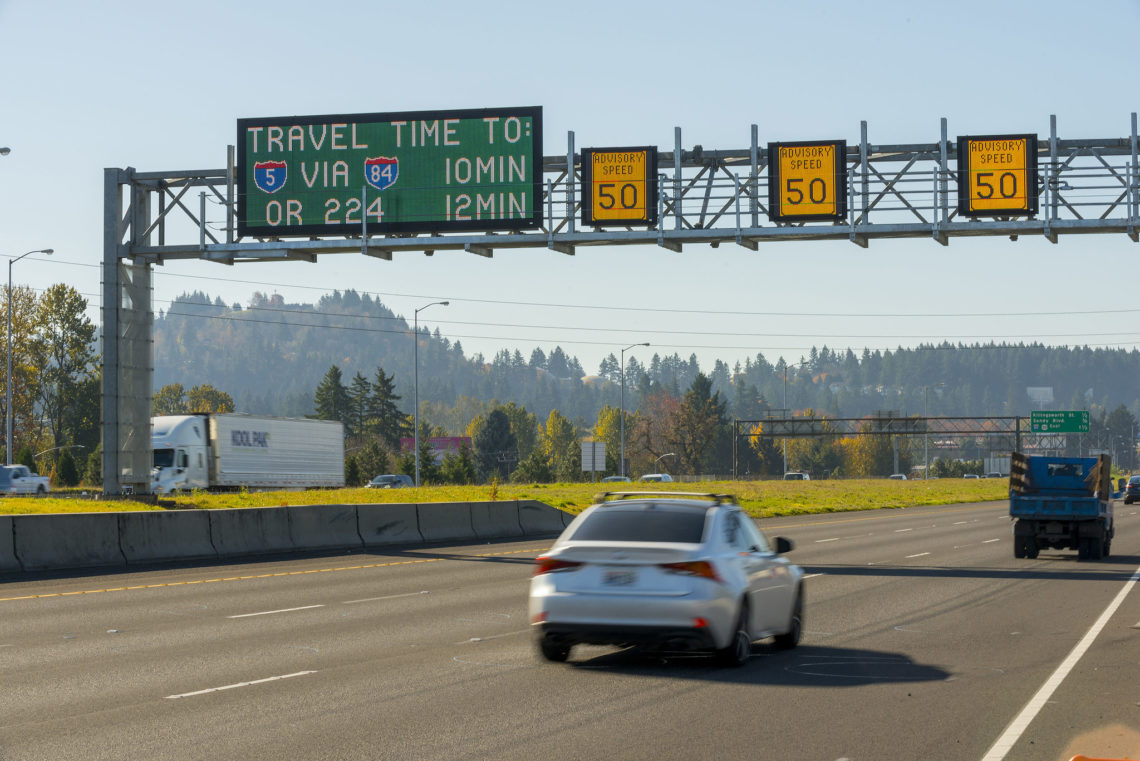
Relieving Congestion in Portland With Auxiliary Lanes
In Portland, Oregon, Interstate 205 wraps a belt around the metro area from south to east into Washington. It’s a busy four-lane highway that gets stacked up several times a day. Recently, Oregon DOT completed a round of work that included adding auxiliary lanes and real-time signs. It’s already helping get kids to school, transport goods to market, and get travelers to and from their errands and work.
“This project makes a difference,” said Oregon DOT Highway Region 1 Manager Rian Windsheimer. “If you’re driving I-205, you’re already experiencing the benefits of auxiliary lanes and ODOT RealTime signs. These improvements are delivering on the congestion relief promise in House Bill 2017, to keep Oregon moving.”
In the I-205 project, we:
- Paved nine miles of freeway in both directions between Johnson Creek Boulevard and the Glenn Jackson Bridge, smoothing out the ride for travelers.
- Constructed three auxiliary lanes to help reduce conflicts with merging traffic, ease congestion and improve safety at key bottleneck locations. We’ll be building one more expected in the next few weeks.
- Installed ODOT RealTime signs that give drivers the ability to make informed travel decisions by providing them with real-time information about traffic flow and roadway conditions – to help everyone get where they’re going safely and efficiently.
Here’s an uplifting fact: After we installed RealTime signs on Oregon 217 several years ago, the number of crashes dropped by nearly 11 percent in the first year. Drivers can now look forward to a more reliable and safer ride on I-205.
Read additional stories from this state:
- Changing light fixtures creates $700,000 savings
- Connect Oregon Continues Creating Successes
- Eastern Oregon public transit helps communities thrive
- Funds Are Improving Safety for Young Students
- Historic Caveman Bridge
- Preserving the Past Helps Us Learn for the Future
- Project overcomes challenges
- Wildlife under-crossing in central Oregon reaches milestone
- Wildlife Under-Crossings Saving Lives in Central Oregon


